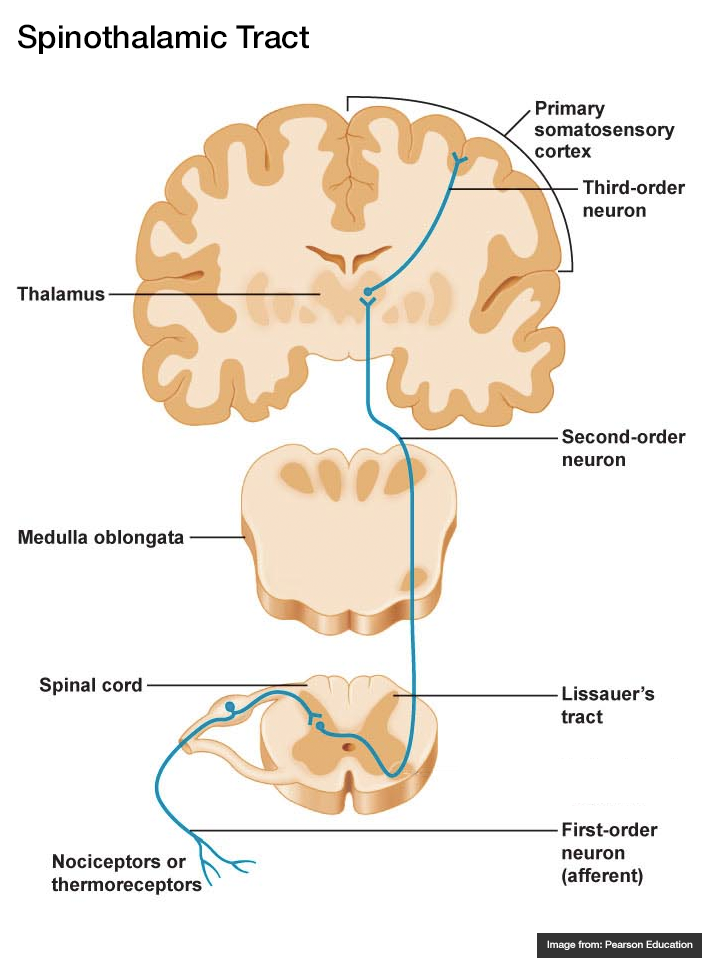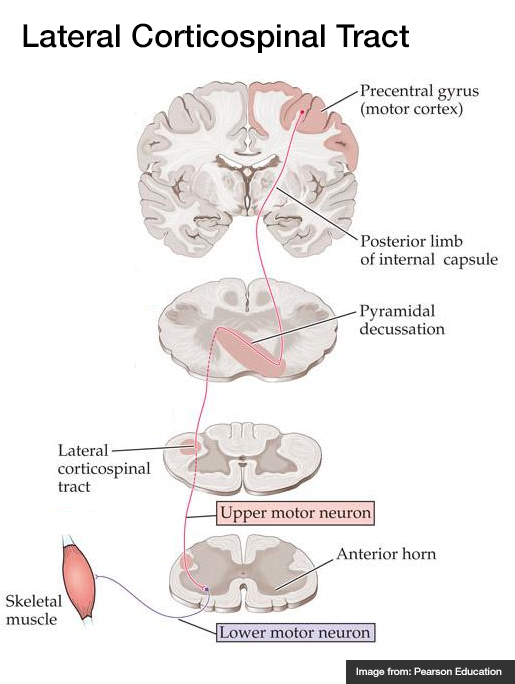Cardinal Presentations
This post is part of a series called “Cardinal Presentations”, based on Rosen’s Emergency Medicine (8th edition).
View Algorithm
There is a ddxof algorithm for the evaluation of weakness. View it here.
There is a ddxof algorithm for the evaluation of weakness. View it here.
Motor Neuron Signs
- Upper Motor Neuron:
- Spasticity
- Hyperreflexia
- Pronator drift
- Babinski
- Lower Motor Neuron:
- Flaccidity
- Hyporeflexia
- Fasciculation
- Atrophy
Causes of Weakness
| Lesion | Critical | Emergent |
|---|---|---|
| Non-neurological | Shock (VS, clinical assessment) Hypoglycemia (POC glucose) Electrolyte derangement (BMP) Anemia (POC Hb, CBC) MI (ECG, troponin) CNS depression (Utox, EtOH) |
|
| Cortex | Stroke | Tumor Abscess Demyelination |
| Brainstem | Stroke | Demyelination |
| Spinal Cord | Ischemia Compression (disk, abscess, hematoma) |
Demyelination (transverse myelitis) |
| Peripheral | Acute demyelination (GBS) | Compressive plexopathy |
| Muscle | Rhabdomyolysis | Inflammatory myositis |
Weakness Syndromes
- Unilateral weakness, ipsilateral face
- Lesion: Contralateral cortex, internal capsule
- Causes: Stroke (sudden onset), demyelination/mass (gradual onset)
- Symptoms: Neglect, visual field cut, aphasia
- Findings: UMN signs
- Key features: Association with headache suggests hemorrhage or mass
- Unilateral weakness, contralateral face
- Lesion: Brainstem
- Causes: Vertebrobasilar insufficiency, demyelination
- Symptoms: Dysphagia, dysarthria, diplopia, vertigo, nausea/vomiting
- Findings: CN involvement, cerebellar abnormalities
- Unilateral weakness, no facial involvement
- Lesion: Contralateral medial cerebral cortex, discrete internal capsule
- Causes: Stroke
- Rare Cause: Brown-Sequard if contralateral hemibody pain and temperature sensory disturbance
- Unilateral weakness single limb (monoparesis/plegia)
- Lesion: Spinal cord, peripheral nerve, NMJ
- UMN signs: Brown-Sequard if contralateral pain and temperature sensory disturbance
- LMN signs: Radiculopathy if associated sensory disturbance
- Normal reflexes, normal sensation: Consider NMJ disorder
- Bilateral weakness of lower extremities (paraparesis/plegia)
- Lesion: Spinal cord, peripheral nerve
- UMN signs: Anterior cord syndrome (compression, ischemia, demyelination) if contralateral pain and temperature sensory disturbance
- Cauda equina: Loss of perianal sensation, loss of rectal tone, or urinary retention
- GBS: If no signs of cauda equina and sensory disturbances paralleling ascending weakness (with hyporeflexia)
- Bilateral weakness of upper extremities
- Lesion: Central cord syndrome
- Causes: Syringomyelia, hyperextension injury
- Findings: Pain and temperature sensory disturbances in upper extremities (intact proprioception)
- Bilateral weakness of all four extremities (quadriparesis/plegia)
- Lesion: Cervical spinal cord
- Findings: UMN signs below level of injury, strength/sensory testing identifies level
- Bilateral weakness, proximal groups
- Lesion: Muscle
- Causes: Rhabdomyolysis, polymyositis, dermatomyositis, myopathies
- Findings: Muscle tenderness to palpation, no UMN signs, no sensory disturbances
- Facial weakness, upper and lower face
- Lesion: CNVII
- Causes: Bell’s palsy, mastoiditis, parotitis
- Other CN involvement suggests brainstem lesion, multiple cranial neuropathies, or NMJ
Review of Spinal Cord Anatomy
- Dorsal Column – Medial Lemniscus (fine touch, proprioception)
- Afferent sensory fibers with cell body in DRG
- Ascend in ipsilateral posterior column
- Synapse in medulla, decussate, ascend in contralateral medial lemniscus
- Synapse in thalamus (VPL)
- Synapse in sensory strip of post-central gyrus
-
Spinothalamic Tract (pain, temperature)
- Afferent sensory fibers with cell body in DRG
- Ascends 1-2 levels
- Synapse in ipsilateral spinal cord, decussate, ascend in contralateral lateral spinothalamic tract
- Synapse in thalamus (VPL)
- Synapse in sensory strip of post-central gyrus
-
Lateral Corticospinal Tract (motor)
- Efferent cell body in motor strip of pre-central gyrus
- Descends through internal capsule
- Decussates in pyramid of medulla, descends in contralateral lateral corticospinal tract
- Synapse in anterior horn, lower motor neuron to muscle fiber
References
- Morchi, R. (2013). Weakness. In Rosen’s Emergency Medicine – Concepts and Clinical Practice (8th ed., Vol. 1, pp. 124-128). Elsevier Health Sciences.




